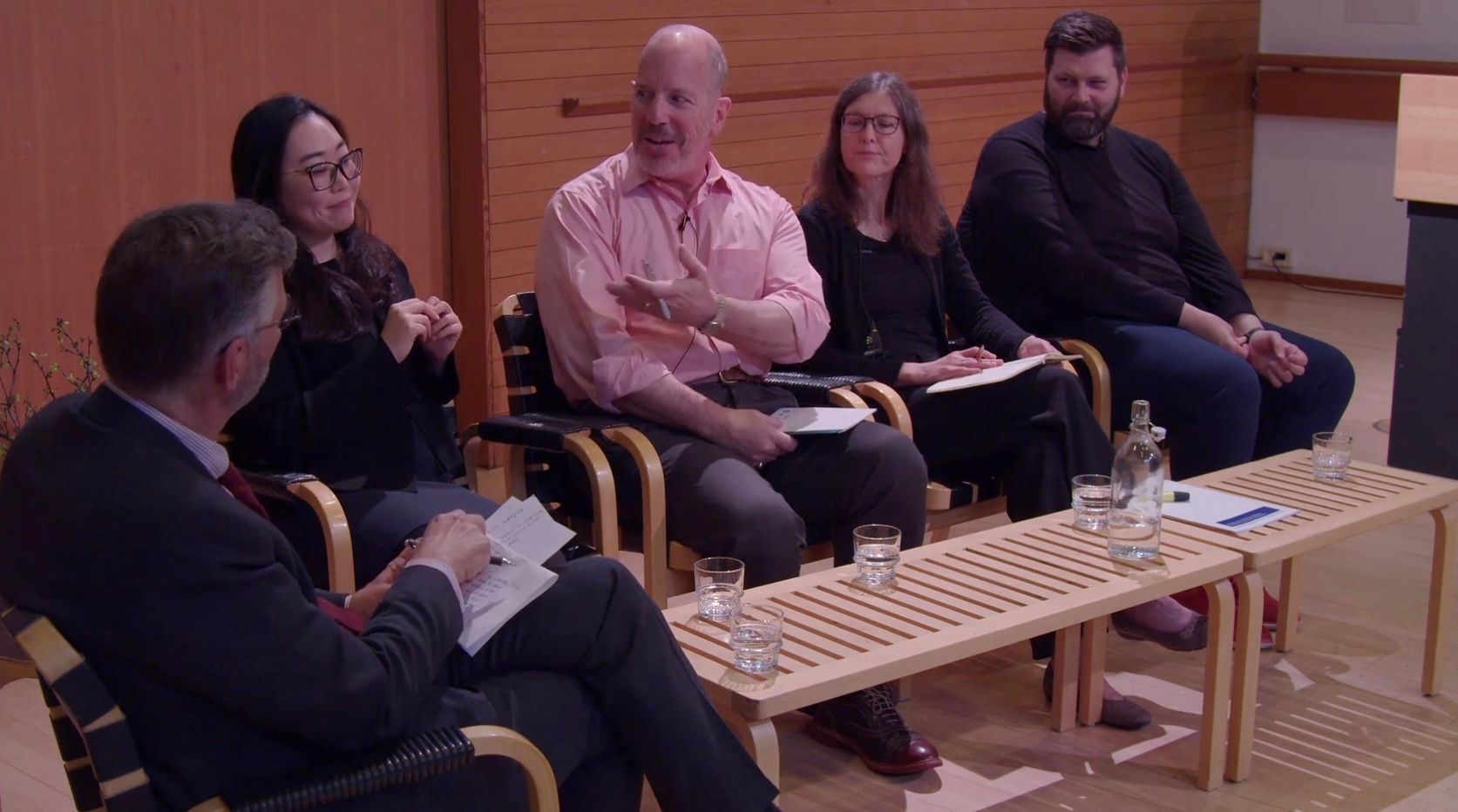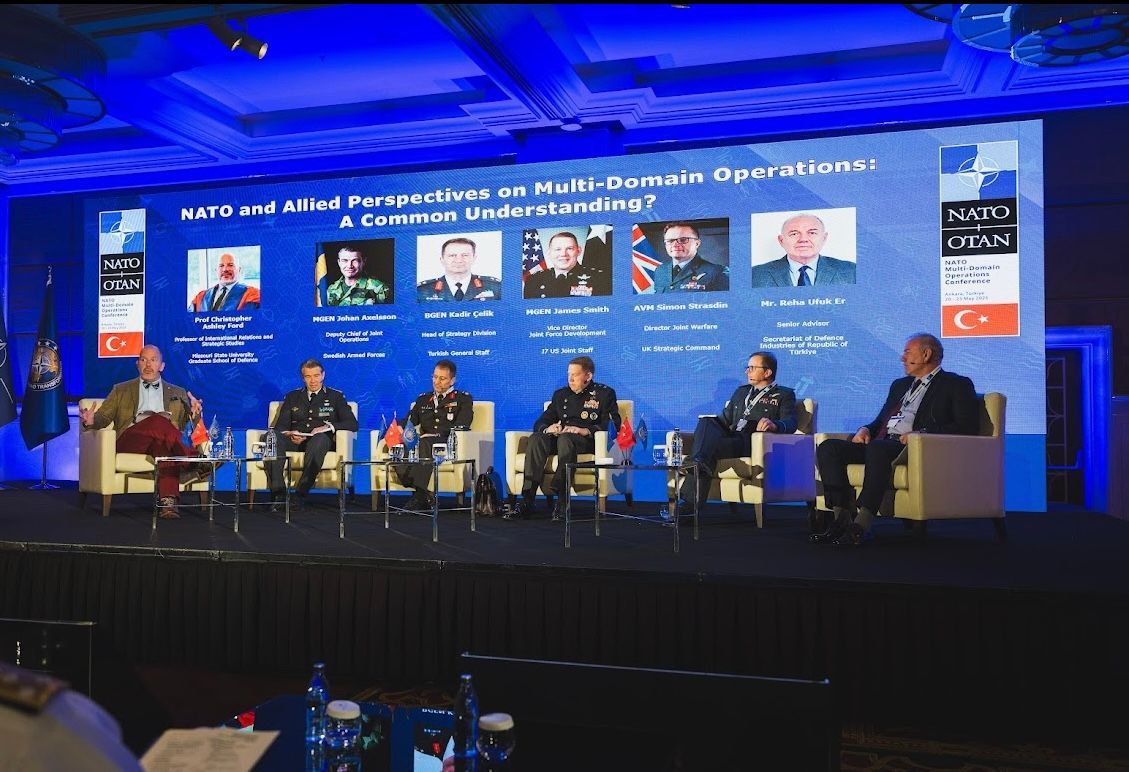President Trump and Nuclear Weapons Policy
Note:
Below are remarks Dr. Ford delivered -- in official capacity as Special Assistant to the President and Senior Director for WMD and Counterproliferation on the U.S. National Security Council staff -- to the Arms Control Association on June 2, 2017.
Good afternoon, everyone. It’s a pleasure to have the chance to talk to you, and I am grateful both to the Arms Control Association for organizing this event and to the Carnegie Endowment for International Peace for being such a gracious host.
Daryl Kimball asked me to say a few words about the new U.S. administration’s policy on nuclear weapons. This is a challenging assignment, inasmuch as many of our policy reviews on related topics are still underway, as I outlined in my remarks to Carnegie’s nonproliferation conference in March. The Nuclear Posture Review and the Ballistic Missile Defense Review, which are being led by the Department of Defense, are still in progress, and we have also not yet completed our review of various arms control and disarmament-related regimes and approaches. Nevertheless, the issue of our new team’s approach to nuclear weapons is a great topic, so I’ll try to be as forthcoming as I can.
To that end, I thought it would be helpful to try to rein in some of the more goggle-eyed assumptions that are sometimes made in media coverage of what the President has said on nuclear weapons topics. To hear some commentators and critics tell it, our new administration has been shackled to an incoherent series of rants across the spectrum of nuclear issues – pronouncements and suggestions that, if actually taken as guides to the development of U.S. nuclear weapons policy, would result in all but immediate catastrophe. I hope I can persuade you, however, that the reality doesn’t deserve that hype. To the contrary, there are concepts and insights informing the President’s comments that will ground a sound and effective U.S. approach to nuclear strategy – an approach that I expect that you will indeed see emerge, in due course, as our various reviews and policy reassessments run their course.
I. Preventing Proliferation
So let’s start with proliferation. The President’s remarks during last year’s election campaign on proliferation in East Asia have been widely repeated, and have been the subject of much hand-wringing. In fact, they are often quoted for shock value, apparently on the theory that they signal some kind of cavalier attitude towards nuclear weapons. If that’s your concern, however, I’d urge that you re-read his comments more carefully.
The President has spoken about the proliferation dangers attendant to continuing on what he has made clear he feels to be a U.S. course, in recent years, of relative military decline – a trajectory along which he has said our military has become depleted and our nuclear arsenal has become outdated. In terms of our relative military positions, the President has said, “we’re not the same country” as we used to be.
In his eyes, this decline has had a detrimental effect upon our alliance relationships and upon peace and security in various tense regions around the world. Significantly, it is to this impact that he linked his widely-quoted comments about potential nuclear proliferation in Japan and South Korea. Were we to allow our downward slide to continue, he told the New York Times , there could come a point at which we would be unable to respond if these allies called for our help in the wake of some terrible North Korean provocation or even attack. It is at that hypothetical point of future U.S. weakness and helplessness that the President suggested it might conceivably make sense for those countries – confronted with an existential threat – to acquire nuclear weapons in order to defend themselves. After all, he said of our allies, as we ourselves have let our strength in the world decay, “I don’t think they feel very secure in what’s going on.” Indeed, he declared, “if the United States keeps on its path, its current path of weakness, they’re going to want to have” capabilities that U.S. strength and geostrategic resolution presently keep them from needing. (He made a similar point to CNN’s Anderson Cooper around the same time.)
Characteristically, the President made these points in ways more blunt and direct than it is usual to hear in traditional inside-the-Beltway policy discourse, but at their core these comments rest upon a good deal of common sense. Moreover, they rest upon some of the same assumptions and arguments that we’ve heard from nonproliferation experts for years. How many times have you heard U.S. officials or think-tank scholars, for example, point out that the credibility and the capabilities inherent in U.S. “extended deterrence” relationships are essential to reassuring allies of the solidity of our alliance guarantees – and thus also to reducing proliferation incentives in regions of the world in which U.S. allies confront the specter of aggression by a rogue state or a large neighbor with territorial ambitions? I, at least, have seen and heard that point made many times over the years – including by scholars published by such diverse institutions as Johns Hopkins’ School of Advanced International Studies, the Brookings Institution, the National Institute for Public Policy, and the National Bureau of Asian Research. It is also a point that I’ve made myself.
Nor do I think the President was wrong to flag that one could imagine circumstances in which it might be reasonable for such a would-be victim state to contemplate nuclear weaponization – which is a point that I have also made myself, though not yet to David Sanger or Anderson Cooper. However, the President’s comments make very clear that the conditions of U.S. decline and weakening deterrent credibility that might make such proliferation seem reasonable to the would-be victim of regional aggression is an unacceptable outcome for his administration.
The whole point, in other words, is that we need to prevent proliferation from occurring for such reasons! The President has said with great clarity – to the New York Times , to CNN , and in the first presidential debate in September 2016, for instance – that proliferation is a huge threat to U.S. national security as well as to international peace and stability. He has said this in a range of contexts. Nuclear proliferation, for instance, is “the biggest problem the world has … [the] [s]ingle biggest problem that the world has.” It is “[o]ne of the very, very big issues. I think maybe the biggest issue of our time.” It is “the single greatest threat. … It is the single greatest threat that this country has.” He could hardly have been more clear that he is very focused upon this threat.
There are, of course, many tools with which we can, and we must, fight nuclear proliferation – a range of instruments that I can assure you this administration is fully committed to using, including supporting international nonproliferation regimes, securing or eliminating vulnerable nuclear material worldwide, preventing the spread of dual-use and other enabling technologies and capabilities, ensuring effective safeguards on peaceful nuclear activities, and interdicting proliferation shipments and otherwise working to slow the development of threat programs. The President has also made clear that he believes our chances of meeting the grave challenges of proliferation, and arresting some of the dynamics that drive it, are better when the United States is strong and resolute than when we are not.
II. U.S. Strength and Resolve
Opportunistic anti-administration hype aside, therefore, I would argue that this is a gob-smackingly sensible point – and indeed a central one to understanding the new administration’s approach to international security policy in general, and to nuclear weapons issues in particular. The President’s underlying point about the importance of U.S. strength and resolution to the preservation of peace and security is one that resonates through decades of U.S. foreign and national security policy. If applying such traditional, even Reaganite reasoning once again to the nuclear weapons arena sounds a bit novel today, it is only because it comes on the heels of years of Obama Administration policy, as articulated in the 2010 Nuclear Posture Review, in which the United States quite explicitly prioritized “[r]educing the role of U.S. nuclear weapons in U.S. national security strategy” over “[m]aintaining strategic deterrence and stability,” over “[s]trengthening regional deterrence and reassuring U.S. allies and partners,” and over “[s]ustaining a safe, secure, and effective nuclear arsenal.
I think you’ll find that this sort of “Peace Through Strength” idea is a leitmotif for all of the President’s comments about nuclear weapons – as well as for how we are approaching our current policy reviews. This recurring theme, I would argue, represents a deep commitment to reducing nuclear dangers, but one that is anchored in an appreciation for the role that American strength and resolve – and a sound and thoughtful U.S. nuclear posture and policy – can play in helping ensure national security and strategic stability.
Our approach to these issues is thus built upon the understanding that U.S. nuclear and conventional strength – and the wise combination of assertiveness and restraint that we aspire to display in its possession – is an essential element of preserving security and peace, and is of critical importance in preventing the very nuclear catastrophes that critics of the new administration have tried so hard to depict the President as being mindlessly willing to countenance. The President tends to express himself differently, and far more directly, on such matters than other politicians or policymakers, but I would argue that you can see this understanding quite clearly in his remarks, which unmistakably suggest that foreign perceptions of U.S. weakness and decline in the national security arena have helped to produce a world in which aggression and conflict – even nuclear conflict – are more likely than had we remained stronger and more firm in confronting threats in our evolving security environment.
“We don’t want to pull the trigger,” he told Anderson Cooper during the last year of the Obama Administration, but he said at that point in 2016 that “nobody is afraid of our president. Nobody respects our president.” By contrast, he felt that a more emphatically “Peace Through Strength”-type approach to deterrence could help forestall some of the nuclear challenges that continued perceptions of American decline would create. To GQ Magazine , for example, he made clear that he intended to ensure that our military was strong and respected – and that it was this strength and respect that would help prevent nuclear weapons use, by deterring aggression.
III. Declaratory Policy
As for U.S. declaratory policy, the President has said that “in the perfect world everybody would agree that [using] nuclear [weapons] would … be so destructive … that nobody would ever use them.” Using nuclear weapons in a confrontation with an adversary would clearly be “a very bad thing” – “an absolute last step” – and as he put it to the New York Times , “I would very much not want to be the first one to use them.”
Nevertheless, he has also signaled that he understands the importance to deterrence of maintaining a degree of strategic ambiguity, of not telling a potential adversary exactly when we would, or would not, use such tools. Ultimately, he told Today in April of 2016, “I don’t want to rule out anything.” He made clear that he hoped to “be the last to use [nuclear weapons]” – and that it would be “highly, highly, highly, highly unlikely that I would ever be using them” – but he emphasized that he would “never ever rule it out.” “I can’t take anything,” he said during the first presidential debate with Secretary Clinton in 2016, entirely “off the table.” There is essentially nothing here, I would argue, that is not consonant with decades of well-established U.S. strategic thinking on nuclear deterrence, notwithstanding the fact that our immediate predecessors in office publicly flirted with different approaches to declaratory policy.
IV. Disarmament
As for disarmament – a goal movement toward which the Obama Administration declared itself to prize above strategic deterrence and stability, reassuring our allies, and sustaining the U.S. arsenal – the President has been rather cautious. As I noted, in “the perfect world,” he told the New York Times , “nobody would ever use” nuclear weapons. (So strong are his feelings about WMD use against innocent populations, in fact, that he was willing to launch a missile strike upon a Syrian airfield after the Assad regime in Damascus used sarin nerve agent against the town of Khan Shaykun in early April of this year.) Ideally, he said of nuclear weaponry in the first presidential debate, “I would like everybody to end it, just get rid of it.”
But the President has also made it quite clear that we don’t live in that “perfect world.” The real world – at least today, and surely for some very considerable period of time, at the least – is a much more messy and challenging one than that. At present, for instance, as he suggested to GQ in November 2015, “you have so many people out there” with nuclear weapons that disarmament is simply not available: “we wouldn’t get rid of the weapons.”
With regard to the long-term future, the President, a month before his inauguration, tweeted about his hope that someday the world might “come[] to its senses regarding nukes.” Until our world comes to resemble the “perfect world” that he described to the New York Times , however, the President has made clear that he believes it essential that we maintain a strong and robust U.S. nuclear posture – and that we reverse what he sees as a decline in the capabilities that underpin deterrence. At present, he said in the first presidential debate, the United States is “not keeping up with other countries” in modernizing our nuclear forces. Russia, for instance, has “a much newer capability than we do,” and “[w]e have not been updating from the new standpoint” as we should have been doing. Until the world at some point “comes to its senses” in a fundamentally different way, therefore, “[t]he United States must greatly strengthen and expand its nuclear capability.”
Fundamentally, I would argue that this is another application of the Reaganite philosophy of “Peace Through Strength” – that is, it represents a vision or an instinct about how the world works in which the maintenance and wise application of U.S. strength and resolve is not inimical to international peace and security but rather essential to it. This philosophy has implications that, when honestly expressed, sometimes make members of the traditional arms control community squirm, such as the President’s warning that he would not permit the United States to be out-competed in the nuclear arena. If a hostile actor were determined to attempt this, he told Morning Joe last December, then “We will outmatch them at every pass. And outlast them all.”
At its core, this approach is one dedicated to keeping such an arms race from having to happen – and it is precisely our willingness to engage in such competition, if we are forced to, that he hopes will persuade potential adversaries that, for them, such a path is a losing game. I would submit that this is not a philosophy antithetical to arms control, but rather one in some deep sense essential to arms control, for it provides a highly unattractive “Plan B” against which our competitors (and would-be competitors) can evaluate their situation – and which can give them a powerful incentive for cooperative engagement with us in this arena.
V. Conclusion
Anyway, what I’ve tried to do here today is to summarize what the President has actually said in public about nuclear weapons policy issues, and to point out how – once one puts aside the sometimes hysterical coverage his remarks are often given in the media – these comments can be seen to hang together in a quite coherent and forceful pattern. I also think one can trace a straight line from his comments to much of the work that we are now doing within the new administration to develop policies and approaches capable of meeting U.S. national security needs, both in today’s increasingly problematic global threat environment and into a deeply unpredictable future.
The President’s Executive Order of January 27, for instance, minced no words about it being the policy of the United States to “pursue peace through strength,” and directed the Secretary of Defense to improve U.S. military readiness. It also directed the preparation of a new National Defense Strategy, with the intention of giving our leadership “maximum strategic flexibility” to determine the force structure necessary to meet requirements. Additionally, it directed the initiation of “a new Nuclear Posture Review to ensure that the United States nuclear deterrent is modern, robust, flexible, resilient, ready, and appropriately tailored to deter 21st-century threats and reassure our allies.”
This work is presently underway, in addition to a broader range of policy reviews designed to ensure that we have appropriately reassessed and tailored our approaches to current and future U.S. national security needs. Because these various efforts have not yet concluded, I’m not in a position today to say more. Nevertheless, I hope you can see that in the President’s remarks can be seen commonsensical insights about national security policy that we are endeavoring today to give institutional form.
I look forward to talking more with you about all these issues as our various policy reviews bear more fruit. Thank you.
-- Christopher Ford








